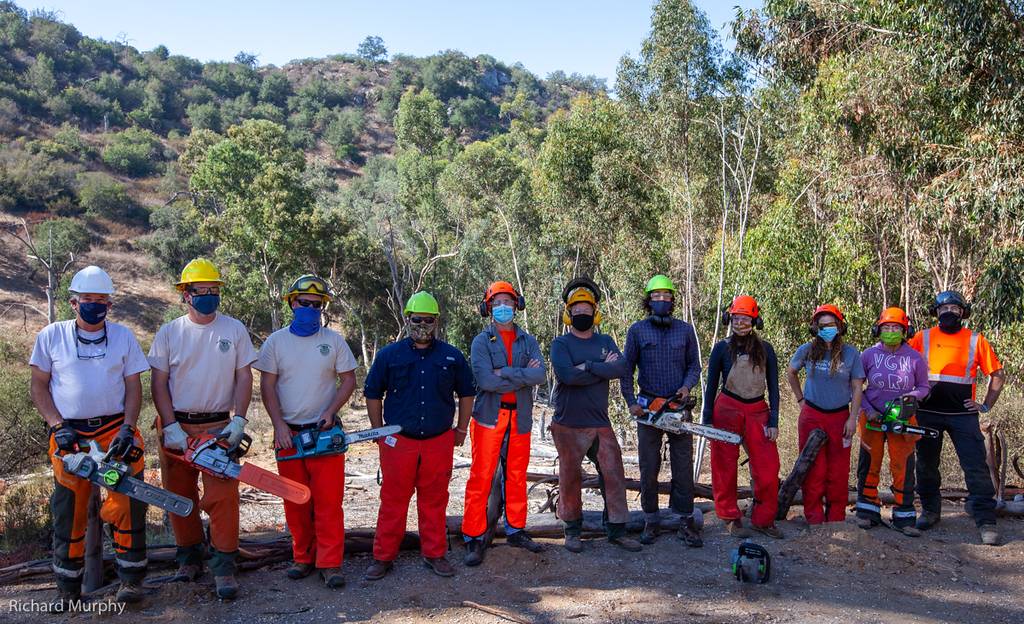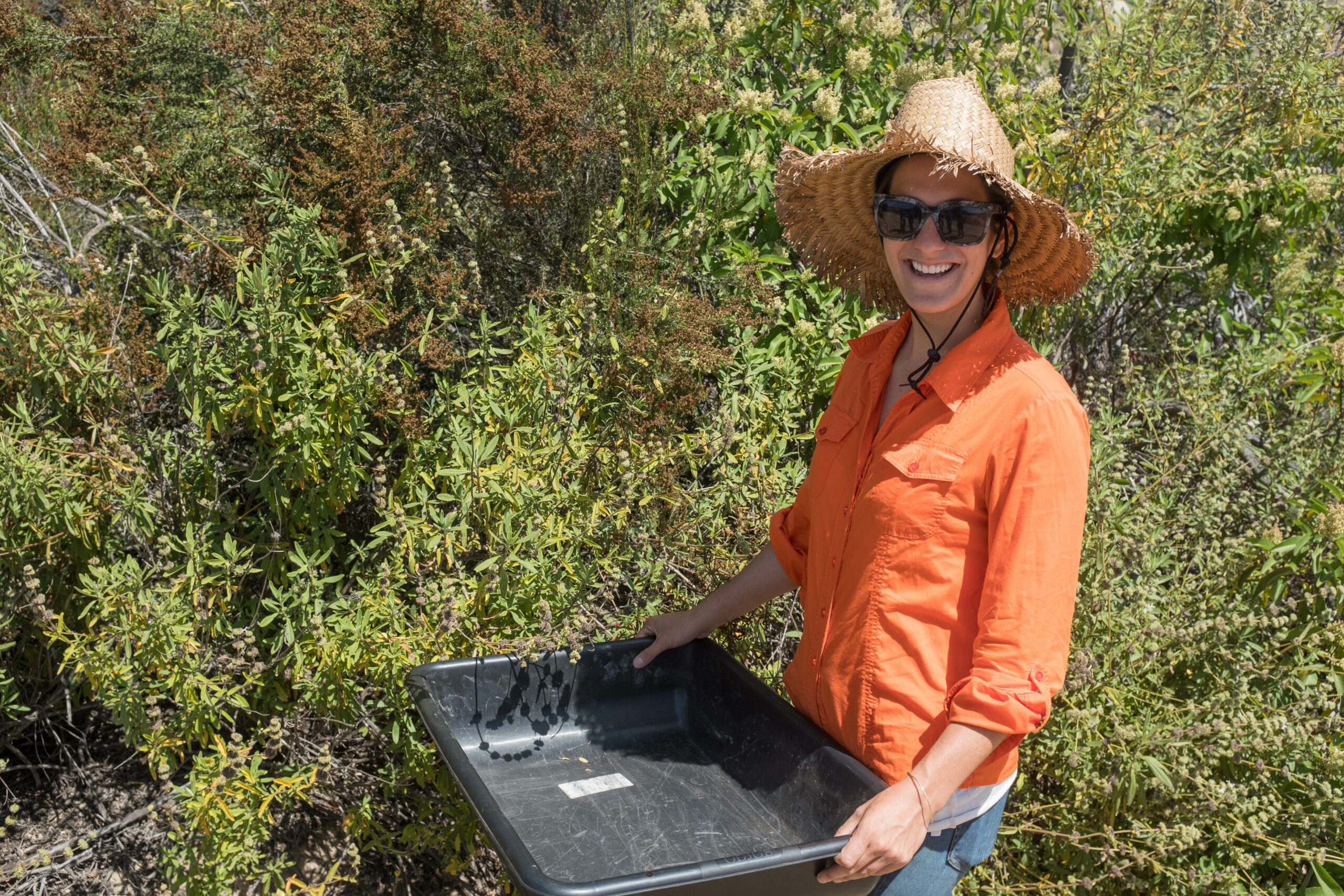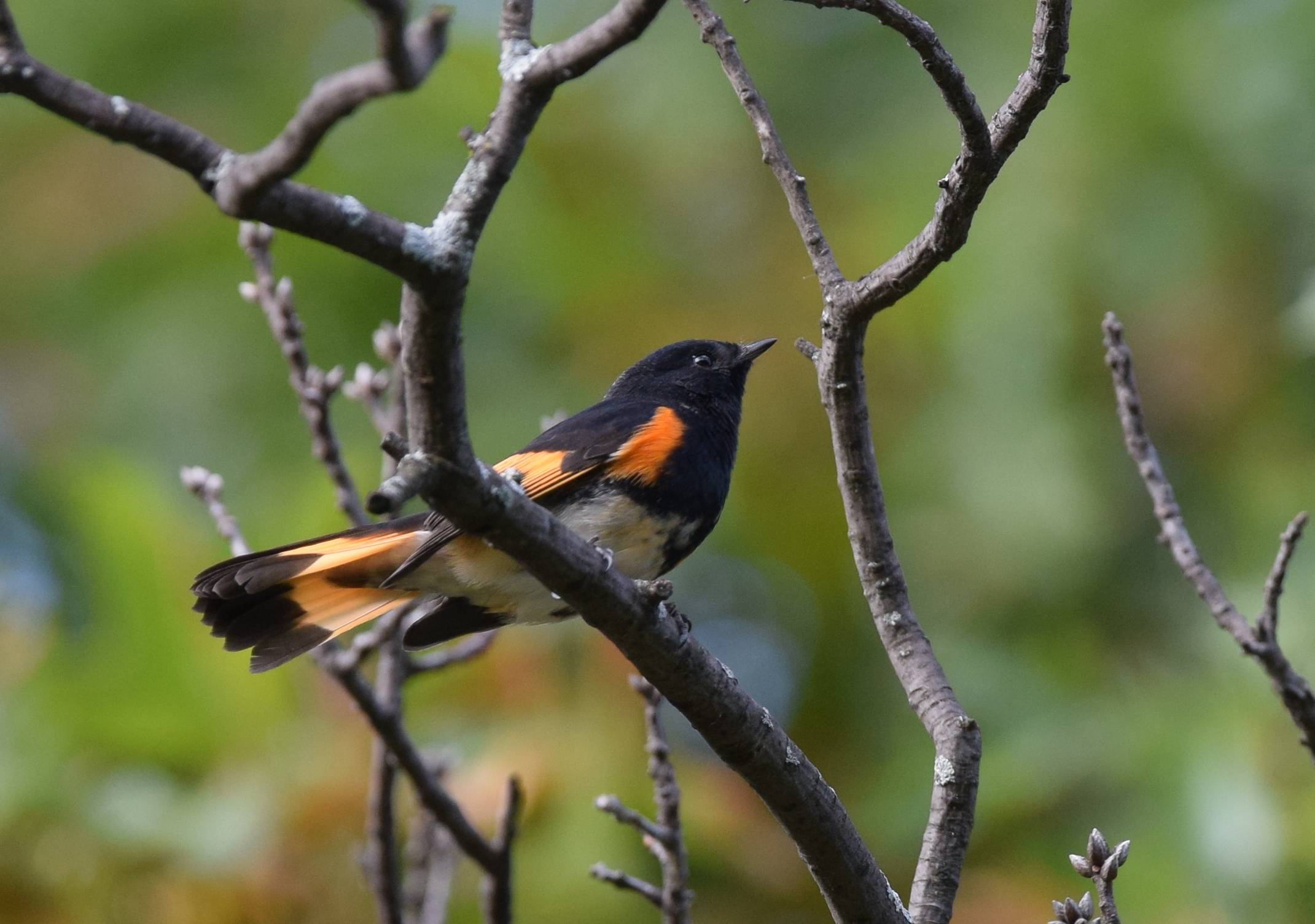
Chainsaw Training Has Eucalyptus Stumped
In our never-ending battle against invasive species, chainsaws are a most important tool. But the safety of our staff and volunteers always takes precedent. So last month, Conservancy staff, volunteers, and some of our conservation partners spent a full day learning the basics of chainsaw safety and maintenance.
“Investing in this training is worth it,” said Conservancy Land Director Hannah Walchak, “because not knowing how to operate this equipment can cause serious injury.”
We held the training at the George Sardina MD Preserve near Lake Wohlford and northeast of Escondido. When the Conservancy acquired the Sardina Preserve last year through its Save 1000 Acres campaign, it was densely covered with nearly 30 acres of non-native bluegum eucalyptus, Eucalyptus globulus.
As we learned, the trees are perfect for honing chainsaw skills.
We paid particular attention to the tree-felling process. Trainees assessed areas for escape routes and obstacles high and low that could change the direction of a falling tree. We studied the target tree’s direction of lean and weight distribution—important factors for choosing the safest felling direction. To develop skills for cutting felled trees, trainees practiced safe techniques for sawing limbs and bucking logs, avoiding a chain pinch and keeping that chain away from rocks and dirt.
Throughout Southern California, highly-flammable eucalyptus is a moderately invasive tree that crowds out and deprives native vegetation of resources. Removing eucalyptus from the watershed is a long-term project.
With help from nonprofits such as The Nature Collective, government agencies such as CAL FIRE, and volunteers, we have removed about six acres of eucalyptus at Sardina Preserve. That translates into about 1,000 trees ranging from five to 20 inches in diameter. We are replanting the cleared areas with native shrubs, oak and sycamore trees.
Elsewhere in the watershed, hundreds of acres of non-native trees that are dead or dying await removal to prevent wildfires and restore native habitat. That means we’ll have plenty of chances to fire up those chainsaws!





